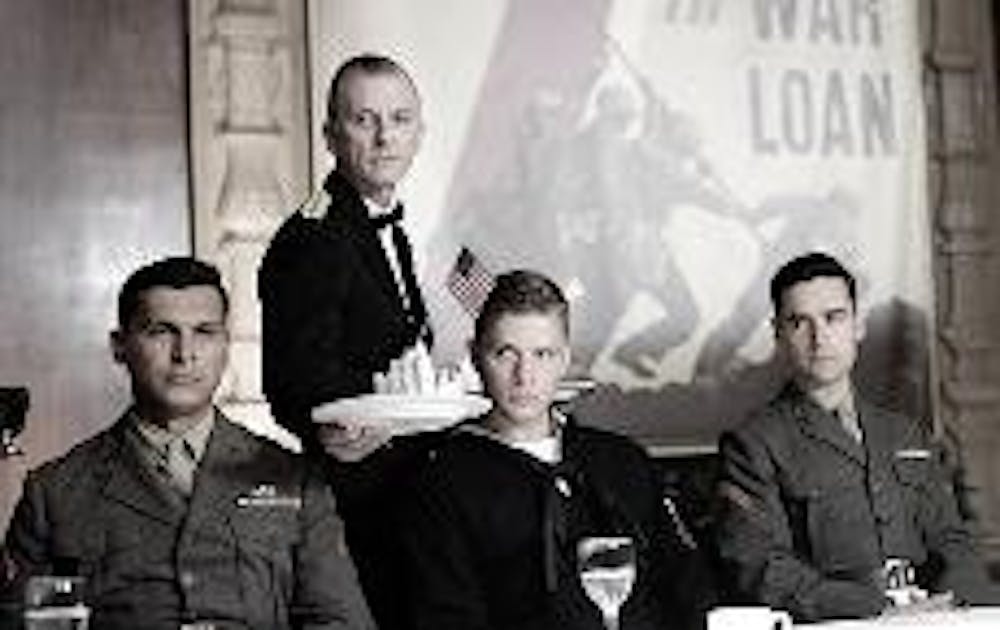"Flags of Our Fathers" has two things going against it from the very start: 1) It is going to be compared to "Saving Private Ryan" mercilessly; and 2) "Saving Private Ryan" is a better movie. While "Flags" is still beautifully shot, director Clint Eastwood is better than this and has proven so on multiple occasions before.
For those who have not seen the innumerable trailers leading up to this release, this is the story of the "heroes of Iwo Jima," those soldiers depicted in the famous photograph and monument, raising the American stars and stripes after one of the bloodiest battles of the Pacific Campaign in World War II. However, this is much less about the battle of Iwo Jima and more of an in-depth look at the men who survived and the toll it took on their lives. In an interesting move, the movie does not open with the battle itself but instead tracks the men before the battle even begins, presumably to give the audience more of an emotional connection with the characters.
The film cuts between three periods: the battle; the post-battle tour, in which the survivors try to raise money for the war effort; and the near-present, as those still alive retell their stories.
One of the great qualities of "Saving Private Ryan" is that the movie tracks that unit's progression throughout the entire film, allowing you to connect with the characters as they work toward their mission's goal. In "Flags of Our Fathers," however, the flashes between periods distract more than they give insight, making it very difficult to feel deeply for their predicament.
Out of the amazing cast, the two standouts are Ryan Phillippe as John "Doc" Bradley and Barry Pepper as Mike Strank. This is familiar territory for Pepper, but he manages to perform strongly as the officer who wants nothing more than to make sure his boys get home. Phillippe is surprisingly good, putting in the best performance of anyone in the movie, especially in the post-battle segments as he attempts to overcome the terrible images he can't quite shake
Unfortunately, the nature of the movie and its presentation of the plot prevent any standouts aside from these two, but an accomplished cast supports them all the same and builds on the work these two do.
The movie is, however, shot very well. The cinematographer can expect an Oscar nod this spring. The war is shown with appropriate chaos, followed by maddening silence as the two sides wait for their next move. The film is unrelenting in depicting the horrors of war in muted colors that make the blood and violence pop off the screen. Additionally, rural America is shot to capture the sun, dust and heat that make up the images most people associate with that era.
Lastly, most of the scenes during the post-battle fundraising period are shown in an almost hazy, Hollywood-glitz type of lighting that really serves to push the notion that what they're doing is only for show. It's a gorgeous movie to look at, but again because of the jumps in time and the cuts it never quite makes use of the opportunity that was there.
Eastwood simply overstretches his bounds, trying to do too much by showing the war and the social commentary, and as a result doesn't succeed greatly on either side. This movie is above average, but not outstanding. Its true test will come from Eastwood's follow-up, showing the same battle from the Japanese side of the war. Titled "Letters from Iwo Jima" and starring Ken Watanabe, it should be interesting to see the differences between the two films and whether they can stand up to the crushing weight of trying to outshine a movie like "Saving Private Ryan"





